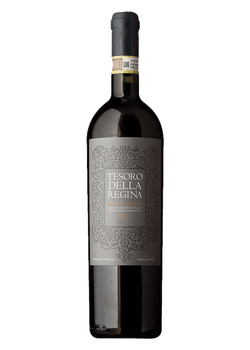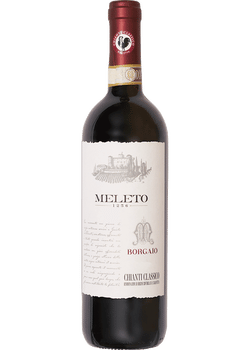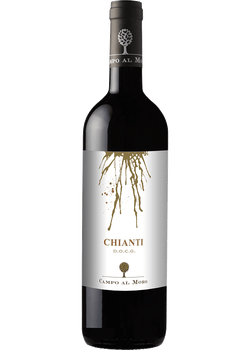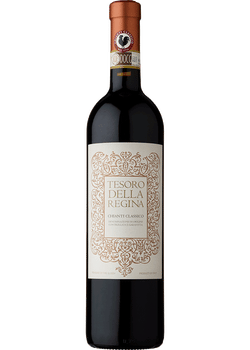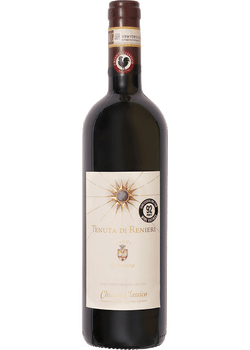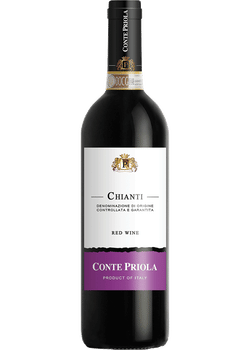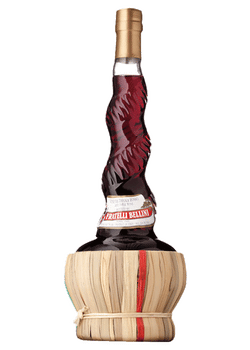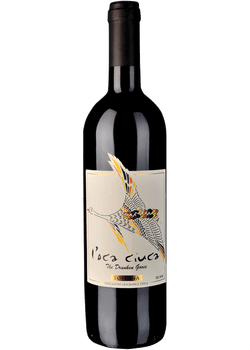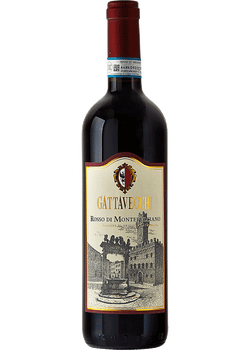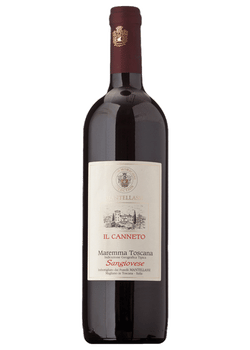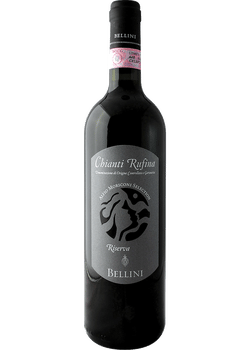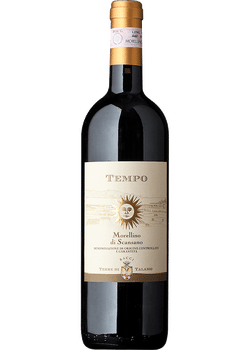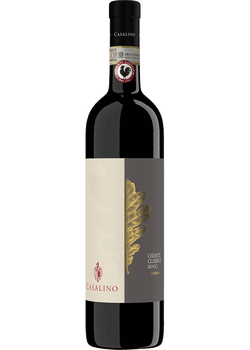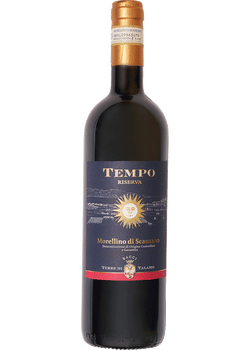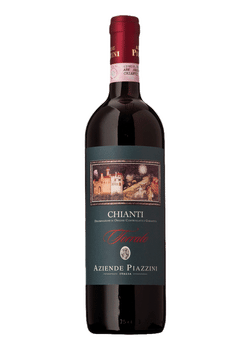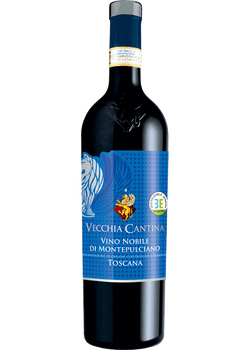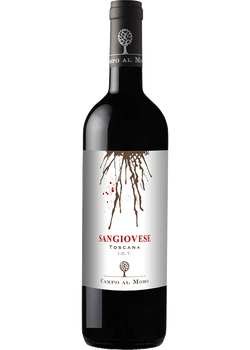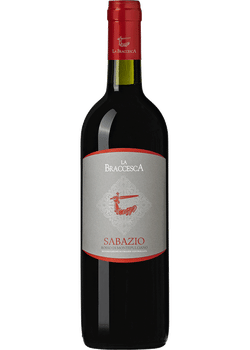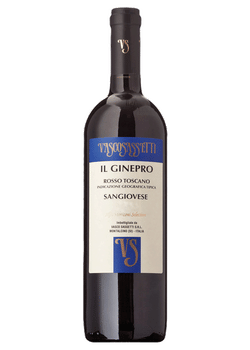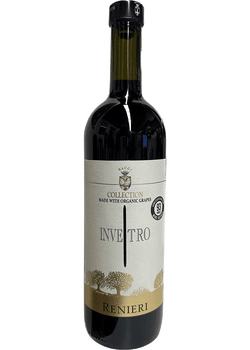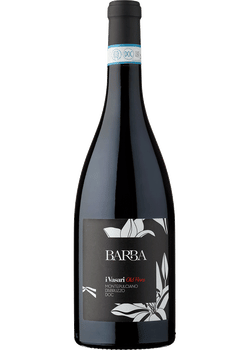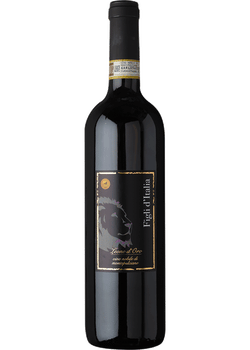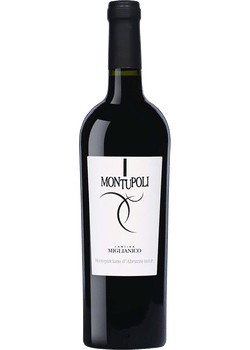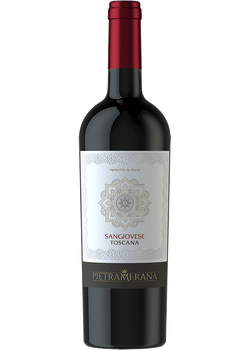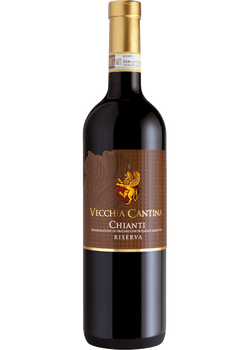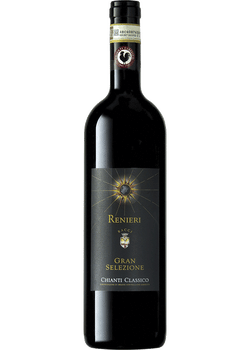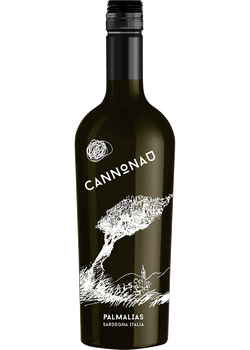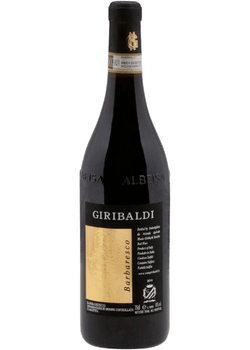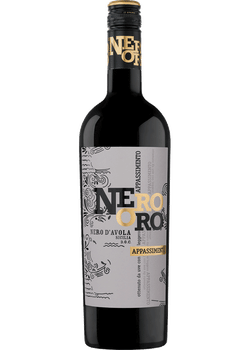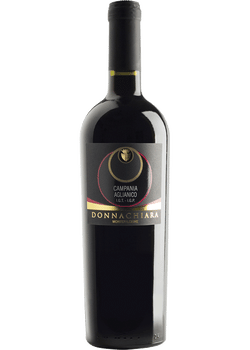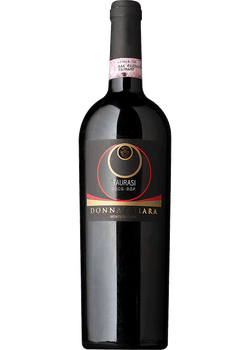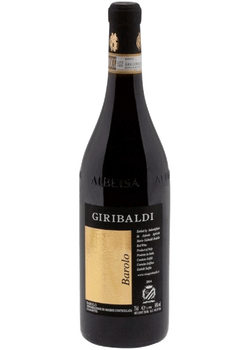Sangiovese (pronounced San-jo-VAY-zay) is Italy’s most-planted grape and used to make some of the country’s most notable wines including Chianti Classico and Brunello di Montalcino. As with all Italian wine, you won’t see the name of this grape on the label so it can be tricky to know when you are drinking it. We’ll dive into what Sangiovese tastes like, where it is grown, and specific names you should look for.
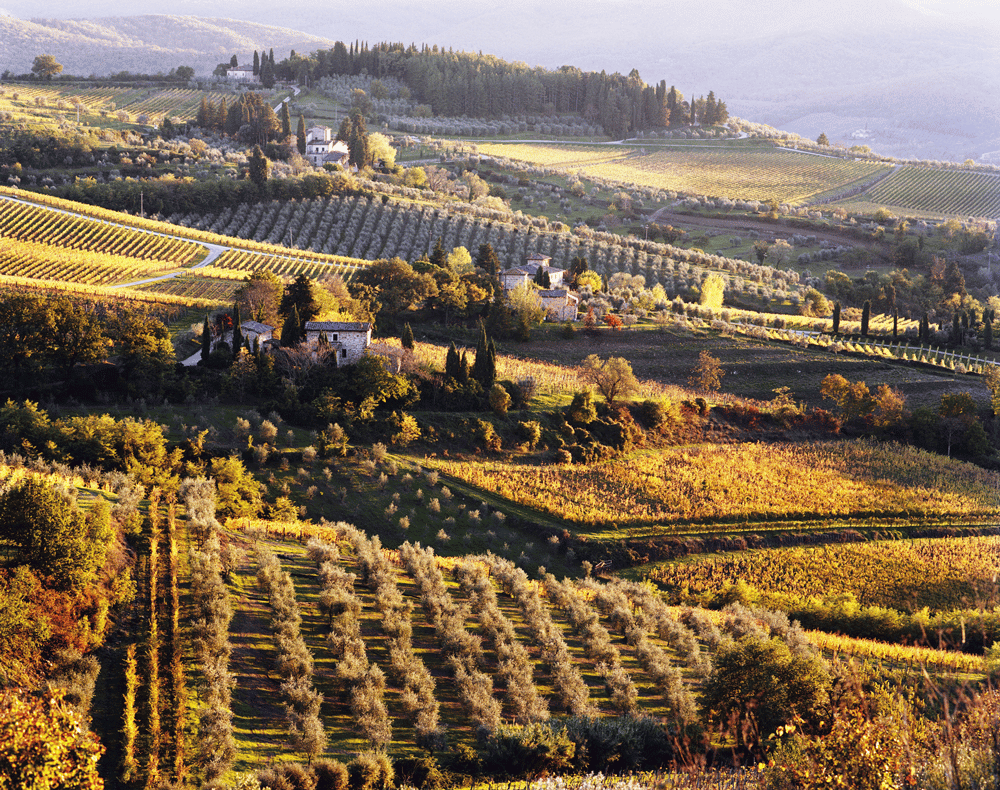
5 facts you should know
- Sangiovese is Italy’s most planted grape, followed by Montepulciano
- The parent grapes are Ciliegiolo and Calabrese Montenuovo
- Sangiovese means “blood of Jove” or the blood of Jupiter, a Roman god
- It is a late-ripening grape with thin skin that can be challenging to grow just like Pinot Noir
Color

Tasting profile
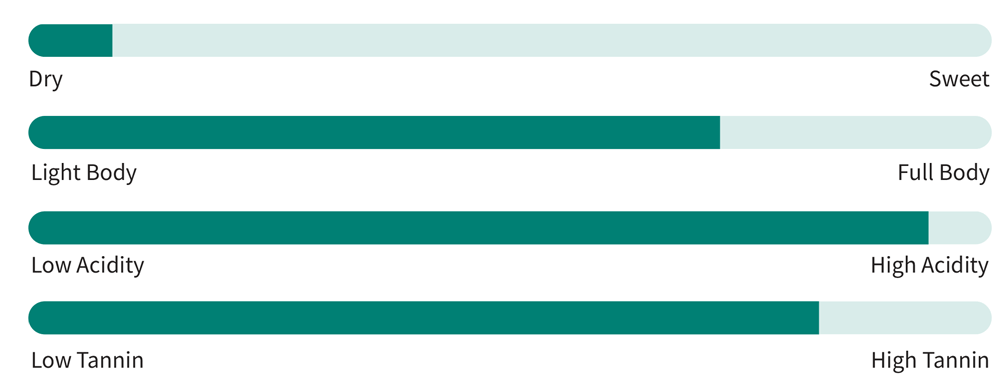
Sangiovese is a dry, medium-bodied wine with medium to high tannin and high acidity. To balance the acidity and tannin, it is often blended with other red grapes, including Canaiolo (another Italian grape), Cabernet Sauvignon, and Merlot. Winemakers must find the perfect balance when adding more powerful grapes like Cabernet as to not overpower the flavors of the Sangiovese grapes.
Primary flavors
![]()
Sangiovese typically has red fruit flavors of cherry, plum, and blackberry. This grape is also known for its savory flavors including dried herbs, tobacco, leather, espresso, and smoke. Depending on how long it is aged, the wine can also exhibit aromas and flavors of vanilla, flint, moss, and mushrooms.
With hundreds of variations in clones, the specific grape and where it is grown have a big impact on the flavors of a Sangiovese wine. As noted, it is also often blended with other grapes, so you will not always be tasting 100% Sangiovese grapes.
4+ Star Customer Rated
Key winemaking regions
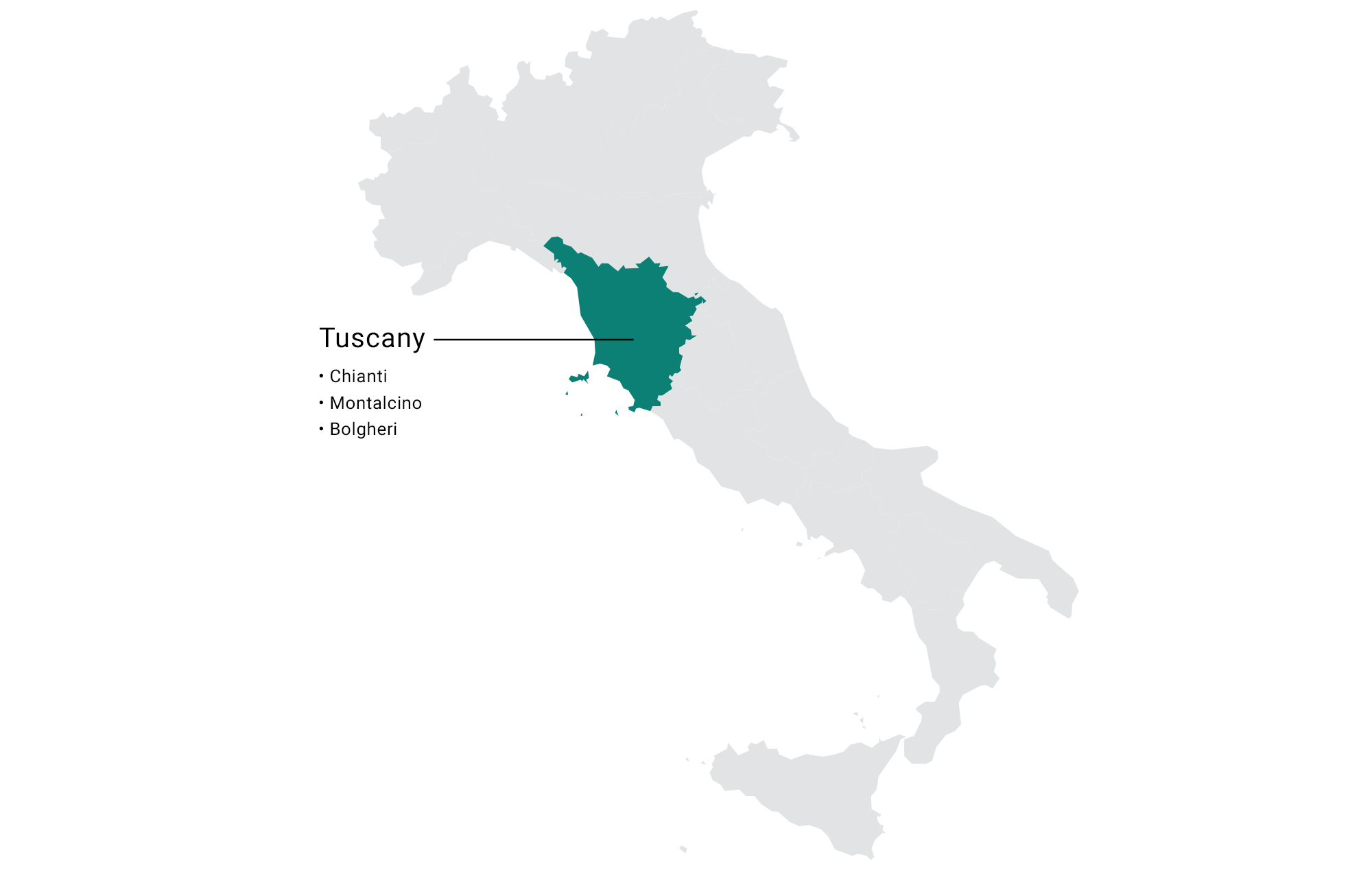
Tuscany, Italy
The climate in Tuscany is perfect for growing Sangiovese. Like Pinot Noir, the grapes do not ripen easily and can be hard to grow. They require a longer, warmer ripening season and are harvested in the late fall.
The landscape of Tuscany is varied with mountains in Chianti in the north, hills and valleys in the south, and flat coastal plains that extend out to the Mediterranean Sea. These variations in topography result in different styles of wine.
Just as the Tuscan landscape is varied, the names of wines made with Sangiovese are, too. It is used to make the iconic Italian red wine, Chianti, which ranges in style from bright and fruity to deeply colored and intense. As well as the powerful, full-bodied Brunello di Montalcino. Additional regional names include:
- Carmignano
- Montefalco Rosso
- Morellino di Scansano
- Rosso Conero
- Rosso di Montalcino
- Torgiano Rosso
- Vino Nobile di Montepulciano
The recipes for these wines are based on centuries of winemaking tradition. We’ll dive into three of the key regions within Tuscany that showcase the beauty of Sangiovese.
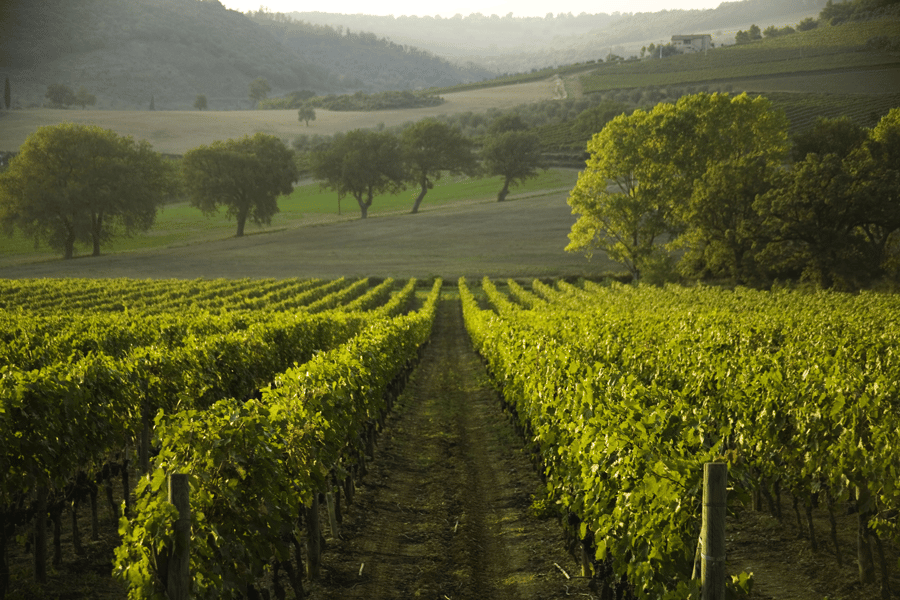
Chianti
Winemaking has occurred in Chianti since the 13th century. Located at the base of the Apennine Mountains, Chianti is divided into seven subzones that all make blends featuring Sangiovese. The traditional blend included Canaiolo and Colorino (two red Italian grapes) and a small amount of a white grape, Trebbiano, for freshness. In the 1980s, winemakers started blending with international grapes like Cabernet Sauvignon and Merlot. Today, Chianti DOCG wines must be 75-100% Sangiovese, up to 10% Canaiolo, up to 15% other reds, and up to 10% Malvasia and Trebbiano.
Chianti Classico DOCG
Chianti Classico was given DOCG status in 1984. The “Classico” designation means it is considered the traditional or original area of wine production. Grapes are grown at higher altitudes than in Chianti, resulting in slightly more intense and complex wines. Chianti Classico also has slightly different restrictions: 80-100% Sangiovese and up to 20% Canaiolo, Colorino, Cabernet, and/or Merlot. This region also has two additional aging designations:
- Reserva: Aged for two years
- Gran Selezione: Aged for two and a half years and made with grapes from a single estate
Montalcino
Montalcino is home to a clone of Sangiovese called Brunello. This region is at a lower altitude than Chianti and has warmer temperatures, however, a cooling influence from the Mediterranean keeps the grapes fresh with acidity.
Wines from this region are generally more intense and fuller-bodied, and more expensive as well. They are made from 100% Sangiovese (Brunello) grapes and labeled based on how long they are aged.
- Brunello di Montalcino Reserva: Aged for two years in oak and four years in the bottle
- Brunello di Montalcino: Aged for two years in oak and three years in the bottle
- Rosso di Montalcino: Aged for one year
Bolgheri
Bolgheri is a small region located on the Tuscan coast. This region is famous for creating Super Tuscans.
During WWII, the Sassicaia family planted Cabernet grapes because they couldn't get the Bordeaux blends they loved. The family started making Sangiovese blends including international grapes, later to be coined Super Tuscans.
In the 1960s, Super Tuscan grew in popularity and more wineries planted Cabernet, Merlot, Syrah, and Cabernet Franc to blend with Sangiovese. These wines did not fit DOC requirements and, while very popular, they were simply labeled Vin da Tavola or table wine. Later, they were able to receive Toscana IGT or Bolgerhi DOC designations.
Other Italian regions
Sangiovese is grown all across central Italy including Emilia-Romagna, Umbria, Marche, and Lazio. It can also be found north in Lombardy and south in Campania.

Other regions
Beyond Italy, you will not find a lot of Sangiovese grapes grown. It is a tricky grape and seems to thrive the most in its home in Tuscany. Other countries that do grow minimal amounts of Sangiovese include Argentina, France (on the island of Corsica), the US (in California and Washington), and Australia.
Recommended food pairings
![]()
With bright acidity and savory flavor notes, Sangiovese wines are excellent food companions. If spaghetti and meatballs are on the menu, or any dishes featuring tomato sauce, reach for a glass of Sangiovese. Unlike some reds, Sangiovese has enough acidity to stand up to the high acid of tomato-based dishes.
Depending on the blend or style of Sangiovese you are drinking, different foods may go better with your wine. Chianti is excellent with salty prosciutto, grilled chicken, and, of course, pizza. If you are enjoying a glass of Brunello, go for stronger flavored dishes like prime-rib and steak or bold cheese like aged Parmesan.
How to store, serve, & enjoy
Like most red wines, Sangiovese is best served slightly chilled at 60 to 65 degrees Fahrenheit. Place your bottle in the refrigerator for 20 minutes before opening and you’ll achieve this ideal temperature.
When it comes to choosing a glass, Sangiovese does not need a very large bowl as it tends to not be as fragrant as some other red wines. A standard wine glass will work just fine!
If you have a decanter, go ahead and break it out. All red wine benefits from a little time breathing to open it up and bring out all the flavors and aromas.
Want to learn about wines from Italy? Discover the different regions, varietals, and styles of wine in our guide to Italian wine regions. If you’re ready to try a bottle of Sangiovese, explore our selection here.

